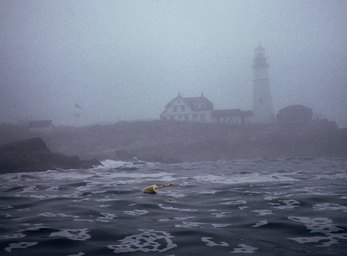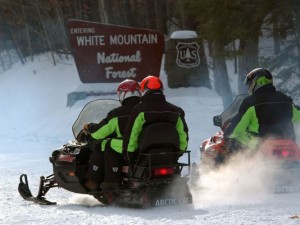New boat-triggered foghorn system spurs longing for soothing ambience along the fog-shrouded coastline
Human impacts, News Comments Off on New boat-triggered foghorn system spurs longing for soothing ambience along the fog-shrouded coastlineIn seaside communities up and down the Maine coast, a new foghorn-triggering system being rolled out by the Coast Guard is spurring passionate pushback. The hardware supporting the old system—which turned on foghorns whenever humidity rose above a threshold and kept the gentle blasts going for hours at a time—is being replaced by a new system that is triggered by radio pulses from boats, so that the foghorns are activated only for short periods as boats are in transit nearby. The Coast Guard says that the old moisture-based hardware is wearing out, and the manufacturer no longer makes new parts, necessitating the change-over.
 Jane Dillon of York, who gathered 350 signatures in favor of a return to the old system, said opinions about the old foghorn often divided people in York, with longer-established residents firmly standing by their love of the horn’s tone, which she called “that haunting sound that brings me back to the days when sailors were out there hoping for safety.” In Kennebunkport, Tom Bradbury agreed: “There’s a sense that someone is on guard, watching over those who are on the water. We find it a very pleasing, comforting sound.” At Kennebunkport’s Cape Porpoise, Goat Island Light was one of the first ones to be outfitted with the new system, after the old hardware failed six times in six years; but after an outcry, the Coast Guard temporarily replaced the old unit, and plans to do more public outreach to prepare citizens for the change. Similarly, roll-outs in other communities along the coast will be accompanied by increased engagement with communities ahead of time. Meanwhile, concerns are being raised about the safety of small boats without the VHS radios necessary to trigger the new system; but with the old system’s parts going out of circulation, options are limited.
Jane Dillon of York, who gathered 350 signatures in favor of a return to the old system, said opinions about the old foghorn often divided people in York, with longer-established residents firmly standing by their love of the horn’s tone, which she called “that haunting sound that brings me back to the days when sailors were out there hoping for safety.” In Kennebunkport, Tom Bradbury agreed: “There’s a sense that someone is on guard, watching over those who are on the water. We find it a very pleasing, comforting sound.” At Kennebunkport’s Cape Porpoise, Goat Island Light was one of the first ones to be outfitted with the new system, after the old hardware failed six times in six years; but after an outcry, the Coast Guard temporarily replaced the old unit, and plans to do more public outreach to prepare citizens for the change. Similarly, roll-outs in other communities along the coast will be accompanied by increased engagement with communities ahead of time. Meanwhile, concerns are being raised about the safety of small boats without the VHS radios necessary to trigger the new system; but with the old system’s parts going out of circulation, options are limited.
Unless an alternative source for the moisture-triggered hardware magically appears, the call of the foghorn seems likely to become a signal that boats are passing by, rather than being a soothing voice of the coastline when shrouded in fog.

